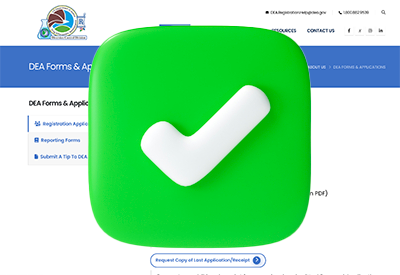Home » E&M Codes for Fun and Profit: A Story of 4 Psychiatrists
E&M Codes for Fun and Profit: A Story of 4 Psychiatrists
February 1, 2016
From The Carlat Psychiatry Report
Daniel Carlat, MD
Editor-in-Chief, Publisher, The Carlat Psychiatry Report
Dr. Carlat has disclosed that he has no relevant financial or other interests in any commercial companies pertaining to this educational activity.
Since 2013, all psychiatrists have had to use new CPT (Current Procedural Terminology) codes. We published a primer on the system in our May 2013 issue, but the codes are still complicated. The good news is that the new system values psychiatric services at a higher level, and reimbursements per visit have increased substantially, by 20% or more. Hopefully, this will encourage psychiatrists who have fled insurance networks to return to them—you can now be assured of a robust income with an insurance-based practice, even if you choose to see many of your patients for therapy.
I don’t intend to rehash all the guidelines—I’ve added some links at the end of this article for those wanting to immerse themselves in the details. Instead, in this article I’ll give you a quick overview of evaluation and management (E/M) coding, and I’ll share the experiences of 4 psychiatrists who have been using these codes over the last 3 years. Each clinician has a somewhat different approach, but they have all found ways to integrate E/M coding into their busy practices, and they will offer some shortcuts and other tips.
The new CPT codes have essentially split up our old procedure codes into two: The E/M codes reflect what you do when you evaluate a patient for medication management, and the revamped psychotherapy codes are for the therapy component of visits. Since many of us do both med management and therapy, we now use 2 codes for most of our patients—an E/M and a psychotherapy code.
The psychotherapy codes are pretty easy. For short visits (around 20 minutes), you can code 90833 (requires at least 16 minutes of face-to-face time), and for longer visits (around 40 minutes), code 90836 (at least 38 minutes of face-to-face time). To document therapy, write something like, “provided supportive therapy for family stressors;” in other words, lots of detail is neither required nor advised, since these are notes that can be shared with other practitioners under HIPAA guidelines. Take-home point: Don’t neglect these therapy codes, since they may pay as much if not more than E/M codes, and it is perfectly kosher for you to add a therapy code to your E/M visit.
The potential documentation nightmares arise with E/M codes, which require that you document 3 main elements of your psychiatric visit: the history, the exam, and “medical decision-making.” Note that these elements correspond to what we’ve been doing all along, though we may use different terms. For instance, I tend to think about my follow-up visits as encompassing history, mental status exam, and an assessment/plan. Some think in terms of a SOAP note, in which case S, subjective, is “history,” O, objective, is “exam,” and A/P, “assessment/plan,” is “medical decision-making.”
In this article, my focus is on follow-up visits (and not the initial evaluation), and on psychiatrists who are not using complex electronic health record (EHR) systems. If you are using an EHR, you are likely engaging in a click-fest that may be tedious, but on the other hand, it generally guarantees that your documentation will survive an insurance company audit. There are advantages and disadvantages of EHRs, and if you are employed by a large practice or health system, you may be required to use the software which they have purchased. Research on EHRs has paradoxically found that they lower physician productivity in smaller practices (Adler-Milstein J and Huckman RS, Am J Manag Care 2013 Nov;19(10 Spec No):SP345−352.)—which is why many psychiatrists have avoided these systems thus far.
If you don’t use an EHR, you’re likely using paper, or perhaps you’ve created your own progress note template in Microsoft Word. Either of these lower-tech systems can play just fine with E/M codes. I interviewed several practicing psychiatrists so that you can learn from their real-world experience with E/M coding. All of my respondents requested anonymity, allowing me creativity in naming them. Spoiler alert: The best solution may be to ignore the guidelines and to simply write a good, thorough SOAP note for all your patients.
Dr. Old School: Pen and paper, baby
Dr. Old School is a senior psychiatrist in private practice who accepts insurance. She schedules most of her patients for 45-minute visits combining therapy and medication. Before 2013, she billed 90807 (individual therapy with medication management) for almost all of her sessions, writing out notes on paper during visits.
With the new CPT, Dr. Old School has changed only one thing in her practice: Instead of billing 90807, she codes all her visits as 99213 with the add-on therapy code 90836. Her notes, still generated via pen and paper, follow a loose format that usually includes a few lines about the interval history, the diagnosis, and some comments on meds. A typical note, for example, would be, “The patient discussed his guilt about not being able to support his parents. Appears to have some OCD symptoms of checking, in addition to depression. Currently taking Wellbutrin, which is helping, will add fluoxetine for OCD.”
When the new codes were released, she spent minimal time reviewing the information—“They were so complicated they gave me a headache,” she said. She decided to use 99213 for all patients primarily because it seemed to represent an average visit. “I didn’t want to bill too high, because it seemed that they required a lot of documentation. I’m not very good at documenting.” One insurance company asked to review some of her records, but it didn’t give her any feedback (positive or negative), and the company continued to reimburse her charges.
Dr. Out of Network: Notes for the patient’s benefit
Like Dr. Old School, Dr. Out of Network sees patients in 45-minute increments, combines meds and therapy, and he bills all of his patients 99213 plus 90836. Unlike Dr. Old School, Dr. Out of Network does not contract with insurance companies and charges $300 per session, with a sliding scale for those who can’t afford his fee. However, he does provide his patients with a bill they can forward to their insurance companies, many of which provide out-of-network benefits after a deductible is met. For this reason, he uses a Microsoft Word template that encompasses the major elements of the HPI, the MSE, diagnosis, and meds. He does this primarily to support the billing code in case an insurance company asks for documentation before reimbursing a patient.
Dr. By the Book: Pathways to success
Dr. By the Book works in a group practice and schedules 3 patients per hour, accepting most insurances. She bills either 99214 or 99213, and for some patients also bills an add-on 90833 for therapy. She has made a careful study of the billing rules, and has developed shortcuts to ensure that she documents exactly what needs to be in the chart to support a given code—no more and no less.
Over the last 3 years, she has developed a limited number of documentation “pathways” for each code. Below are the main pathways for 99213 and 99214.
Important note: E/M coding criteria refer to “problems” rather than “diagnoses.” Sometimes these are identical, (such as “depression”—usually both a problem and a diagnosis), but often patients present with more general problems that are not DSM diagnoses, such as weight gain, anxiety, forgetfulness, anger, etc. Keep this in mind as you read the next 2 approaches, since patients frequently will have only 1 or 2 diagnoses, but may have many more problems, each of which “counts” when you are deciding which code to use.
99213:
99214:
Dr. Volume: A systematic approach
Dr. Volume typically sees 5 patients per hour (a high “volume” practice), billing about 60% of visits 99214 and 40% 99213. He very rarely bills an add-on therapy code, and most of his patients see other clinicians for psychotherapy.
Like Dr. By the Book, Dr. Volume has studied the rules carefully, but he does not use distinct documentation pathways. He has created his own comprehensive progress note template, which includes all the elements of history, exam, and medical decision-making required for any E/M code. He fills out the template for all patient visits, ensuring that his documentation always meets criteria for the highest level of visit. However, he doesn’t bill 99214 for all patients, realizing that there is meaningful variation in the complexity of visits.
His shortcut for deciding which code to use is a sort of streamlined version of Dr. By the Book’s:
One insurance company audited his records and told him that he bills more 99214s than other psychiatrists. “I told them that I researched the regulations extensively, and I’m following all the rules, and they said, okay, that’s fine, and I never heard from them again. I think a lot of psychiatrists are giving up a lot of money if they are billing only 99213s.”
Conclusion
I’ve described 4 approaches to coding for follow-up visits, and they all work for the psychiatrists who use them. Everyone’s practice style is different. The safest policy is to document all your visits thoroughly, but not so comprehensively that you are taking too much time away from your clinical work. If you document the interval history, the MSE, your assessment, and your plan, you will be able to successfully bill a combination of 99214s and 99213s—and probably more 99214s, which will significantly increase your income. The amount of time you spend with patients is not closely related to how high you can bill, within reason, of course. Dr. Volume will never bill a 99214 for a five-minute in-and-out medication refill patient. But there are plenty of fairly complicated patients with 3 or more problems that we can evaluate and treat in 15–20 minutes and who should be billed as a 99214.
For those who want to really get into the rules, I recommend going to the APA website for coding and reimbursement and downloading at least the following 2 documents:
There are additional longer documents on the site as well, one of which is a chapter from one of the definitive resources, Procedure Coding Handbook for Psychiatrists, 4th Edition.
General PsychiatryI don’t intend to rehash all the guidelines—I’ve added some links at the end of this article for those wanting to immerse themselves in the details. Instead, in this article I’ll give you a quick overview of evaluation and management (E/M) coding, and I’ll share the experiences of 4 psychiatrists who have been using these codes over the last 3 years. Each clinician has a somewhat different approach, but they have all found ways to integrate E/M coding into their busy practices, and they will offer some shortcuts and other tips.
The new CPT codes have essentially split up our old procedure codes into two: The E/M codes reflect what you do when you evaluate a patient for medication management, and the revamped psychotherapy codes are for the therapy component of visits. Since many of us do both med management and therapy, we now use 2 codes for most of our patients—an E/M and a psychotherapy code.
The psychotherapy codes are pretty easy. For short visits (around 20 minutes), you can code 90833 (requires at least 16 minutes of face-to-face time), and for longer visits (around 40 minutes), code 90836 (at least 38 minutes of face-to-face time). To document therapy, write something like, “provided supportive therapy for family stressors;” in other words, lots of detail is neither required nor advised, since these are notes that can be shared with other practitioners under HIPAA guidelines. Take-home point: Don’t neglect these therapy codes, since they may pay as much if not more than E/M codes, and it is perfectly kosher for you to add a therapy code to your E/M visit.
The potential documentation nightmares arise with E/M codes, which require that you document 3 main elements of your psychiatric visit: the history, the exam, and “medical decision-making.” Note that these elements correspond to what we’ve been doing all along, though we may use different terms. For instance, I tend to think about my follow-up visits as encompassing history, mental status exam, and an assessment/plan. Some think in terms of a SOAP note, in which case S, subjective, is “history,” O, objective, is “exam,” and A/P, “assessment/plan,” is “medical decision-making.”
In this article, my focus is on follow-up visits (and not the initial evaluation), and on psychiatrists who are not using complex electronic health record (EHR) systems. If you are using an EHR, you are likely engaging in a click-fest that may be tedious, but on the other hand, it generally guarantees that your documentation will survive an insurance company audit. There are advantages and disadvantages of EHRs, and if you are employed by a large practice or health system, you may be required to use the software which they have purchased. Research on EHRs has paradoxically found that they lower physician productivity in smaller practices (Adler-Milstein J and Huckman RS, Am J Manag Care 2013 Nov;19(10 Spec No):SP345−352.)—which is why many psychiatrists have avoided these systems thus far.
If you don’t use an EHR, you’re likely using paper, or perhaps you’ve created your own progress note template in Microsoft Word. Either of these lower-tech systems can play just fine with E/M codes. I interviewed several practicing psychiatrists so that you can learn from their real-world experience with E/M coding. All of my respondents requested anonymity, allowing me creativity in naming them. Spoiler alert: The best solution may be to ignore the guidelines and to simply write a good, thorough SOAP note for all your patients.
Dr. Old School: Pen and paper, baby
Dr. Old School is a senior psychiatrist in private practice who accepts insurance. She schedules most of her patients for 45-minute visits combining therapy and medication. Before 2013, she billed 90807 (individual therapy with medication management) for almost all of her sessions, writing out notes on paper during visits.
With the new CPT, Dr. Old School has changed only one thing in her practice: Instead of billing 90807, she codes all her visits as 99213 with the add-on therapy code 90836. Her notes, still generated via pen and paper, follow a loose format that usually includes a few lines about the interval history, the diagnosis, and some comments on meds. A typical note, for example, would be, “The patient discussed his guilt about not being able to support his parents. Appears to have some OCD symptoms of checking, in addition to depression. Currently taking Wellbutrin, which is helping, will add fluoxetine for OCD.”
When the new codes were released, she spent minimal time reviewing the information—“They were so complicated they gave me a headache,” she said. She decided to use 99213 for all patients primarily because it seemed to represent an average visit. “I didn’t want to bill too high, because it seemed that they required a lot of documentation. I’m not very good at documenting.” One insurance company asked to review some of her records, but it didn’t give her any feedback (positive or negative), and the company continued to reimburse her charges.
Dr. Out of Network: Notes for the patient’s benefit
Like Dr. Old School, Dr. Out of Network sees patients in 45-minute increments, combines meds and therapy, and he bills all of his patients 99213 plus 90836. Unlike Dr. Old School, Dr. Out of Network does not contract with insurance companies and charges $300 per session, with a sliding scale for those who can’t afford his fee. However, he does provide his patients with a bill they can forward to their insurance companies, many of which provide out-of-network benefits after a deductible is met. For this reason, he uses a Microsoft Word template that encompasses the major elements of the HPI, the MSE, diagnosis, and meds. He does this primarily to support the billing code in case an insurance company asks for documentation before reimbursing a patient.
Dr. By the Book: Pathways to success
Dr. By the Book works in a group practice and schedules 3 patients per hour, accepting most insurances. She bills either 99214 or 99213, and for some patients also bills an add-on 90833 for therapy. She has made a careful study of the billing rules, and has developed shortcuts to ensure that she documents exactly what needs to be in the chart to support a given code—no more and no less.
Over the last 3 years, she has developed a limited number of documentation “pathways” for each code. Below are the main pathways for 99213 and 99214.
Important note: E/M coding criteria refer to “problems” rather than “diagnoses.” Sometimes these are identical, (such as “depression”—usually both a problem and a diagnosis), but often patients present with more general problems that are not DSM diagnoses, such as weight gain, anxiety, forgetfulness, anger, etc. Keep this in mind as you read the next 2 approaches, since patients frequently will have only 1 or 2 diagnoses, but may have many more problems, each of which “counts” when you are deciding which code to use.
99213:
- Patients with 1 problem: Document the problem, one medical review of system (ROS) item, which can be psychiatric (eg, “denies anxiety”), and at least 6 items from the mental status exam. (No documentation of medication is required in this pathway, though she usually does so.)
- Patients with 2 problems: Document the problems, one ROS item, and the prescription of a medication.
99214:
- Patients with 2 problems: Document the problems, at least 4 symptom “elements” in the HPI (such as severity, duration, timing, and quality), at least 9 items on the mental status exam, 2 ROS categories (not necessarily psychiatric), and social history (such as “spending more time with friends”).
- Patients with 3 problems: Document the problems, the social history, 2 ROS categories, and the prescription of a medication.
Dr. Volume: A systematic approach
Dr. Volume typically sees 5 patients per hour (a high “volume” practice), billing about 60% of visits 99214 and 40% 99213. He very rarely bills an add-on therapy code, and most of his patients see other clinicians for psychotherapy.
Like Dr. By the Book, Dr. Volume has studied the rules carefully, but he does not use distinct documentation pathways. He has created his own comprehensive progress note template, which includes all the elements of history, exam, and medical decision-making required for any E/M code. He fills out the template for all patient visits, ensuring that his documentation always meets criteria for the highest level of visit. However, he doesn’t bill 99214 for all patients, realizing that there is meaningful variation in the complexity of visits.
His shortcut for deciding which code to use is a sort of streamlined version of Dr. By the Book’s:
- One problem: 99213.
- Two problems that are stable: also 99213.
- Two problems, one of which is worsening: 99214.
- Three problems: 99214.
One insurance company audited his records and told him that he bills more 99214s than other psychiatrists. “I told them that I researched the regulations extensively, and I’m following all the rules, and they said, okay, that’s fine, and I never heard from them again. I think a lot of psychiatrists are giving up a lot of money if they are billing only 99213s.”
Conclusion
I’ve described 4 approaches to coding for follow-up visits, and they all work for the psychiatrists who use them. Everyone’s practice style is different. The safest policy is to document all your visits thoroughly, but not so comprehensively that you are taking too much time away from your clinical work. If you document the interval history, the MSE, your assessment, and your plan, you will be able to successfully bill a combination of 99214s and 99213s—and probably more 99214s, which will significantly increase your income. The amount of time you spend with patients is not closely related to how high you can bill, within reason, of course. Dr. Volume will never bill a 99214 for a five-minute in-and-out medication refill patient. But there are plenty of fairly complicated patients with 3 or more problems that we can evaluate and treat in 15–20 minutes and who should be billed as a 99214.
For those who want to really get into the rules, I recommend going to the APA website for coding and reimbursement and downloading at least the following 2 documents:
- E/M Services Guide: Coding by Key Components (summary chart)
- Patient Examples Outpatient E/M Visits
There are additional longer documents on the site as well, one of which is a chapter from one of the definitive resources, Procedure Coding Handbook for Psychiatrists, 4th Edition.
KEYWORDS practice-tools-and-tips

Issue Date: February 1, 2016
Table Of Contents
Recommended
Newsletters
Please see our Terms and Conditions, Privacy Policy, Subscription Agreement, Use of Cookies, and Hardware/Software Requirements to view our website.
© 2025 Carlat Publishing, LLC and Affiliates, All Rights Reserved.


_-The-Breakthrough-Antipsychotic-That-Could-Change-Everything.jpg?1729528747)



